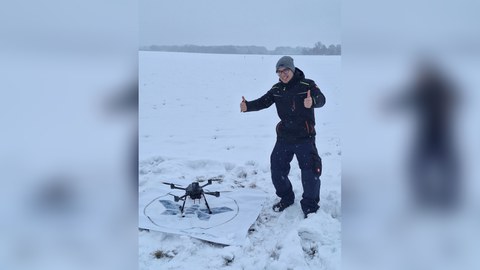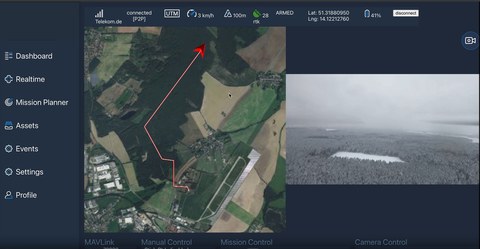Dec 08, 2023
TU Dresden launches InnoDCon, a drone project to optimize network operator models for flights beyond visual range
Researchers at the Vodafone Chair of Mobile Communication Systems at TU Dresden are conducting research into network technologies that will enable drones to fly beyond visual range without risk. The project "Innovative Drone Connectivity - Connectivity Solutions for Mission Guided UAS Flight Operations (BVLOS) and 3D Mobility" (InnoDCon) has been funded by the Federal Ministry for Digital and Transport with more than EUR 1.5 million since the beginning of November 2023 until the end of 2024.
The EU Drone Regulation has been defining uniform basic rules for the operation of drones since 2021. The drones may currently only be flown at a maximum altitude of 120 meters above the ground and only within visual line of sight (VLOS). New operating concepts for drone management in the air and sustainable, open-interface technologies will be required to actively promote the use of unmanned flying objects, e.g. in the areas of mobility, logistics, medicine, agriculture and forestry. For this purpose, flight operations via mobile radio beyond visual line of sight (BVLOS) also need to be considered. The focus here lies on minimizing both air and ground risk.
As part of the InnoDCon project, researchers at TU Dresden are responsible for testing new network technologies in flight operations beyond visual range. The central issue is what a network operator model could look like that will provide drones in the air with an optimized network along the flight route. Radio field measurements in the airspace are intended to help gain knowledge of route management before the start of a flight, but also to be able to provide information about connection quality and stability during operational flight operations. Especially when drones have to use several networks of public and private operators during the flight, it is technically and legally highly complex to ensure continuous telemetry transmission and the control of the drone. This scenario is particularly interesting for the researchers, as the mobile network operators are expected to exchange information about flying objects and flight routes with each other. The drone must be able to access the relevant network services without interruption if required and integrate itself into the air traffic control systems.
The AEF-BVLOS U-Space Lausitz, located in Kamenz, will be available to the project team for the practical tests. The results will be transferred into operational concepts for stable signal availability and signal use. Thanks to the activities in various communication technology committees and the direct cooperation with the responsible authorities (Federal Network Agency (Bundesnetzagentur), Federal Aviation Office (Luftfahrt-Bundesamt)), the project results are incorporated as direct findings into the standardization work of the relevant institutions.
Contact:
Prof. Gerhard Fettweis
Head of Project
Vodafone Chair of Mobile Communication Systems
Tel.: +49 351 463-41010
Laura Wetsch
Project Manager
Vodafone Chair of Mobile Communications Systems
Tel.: +49 351 463-41076


